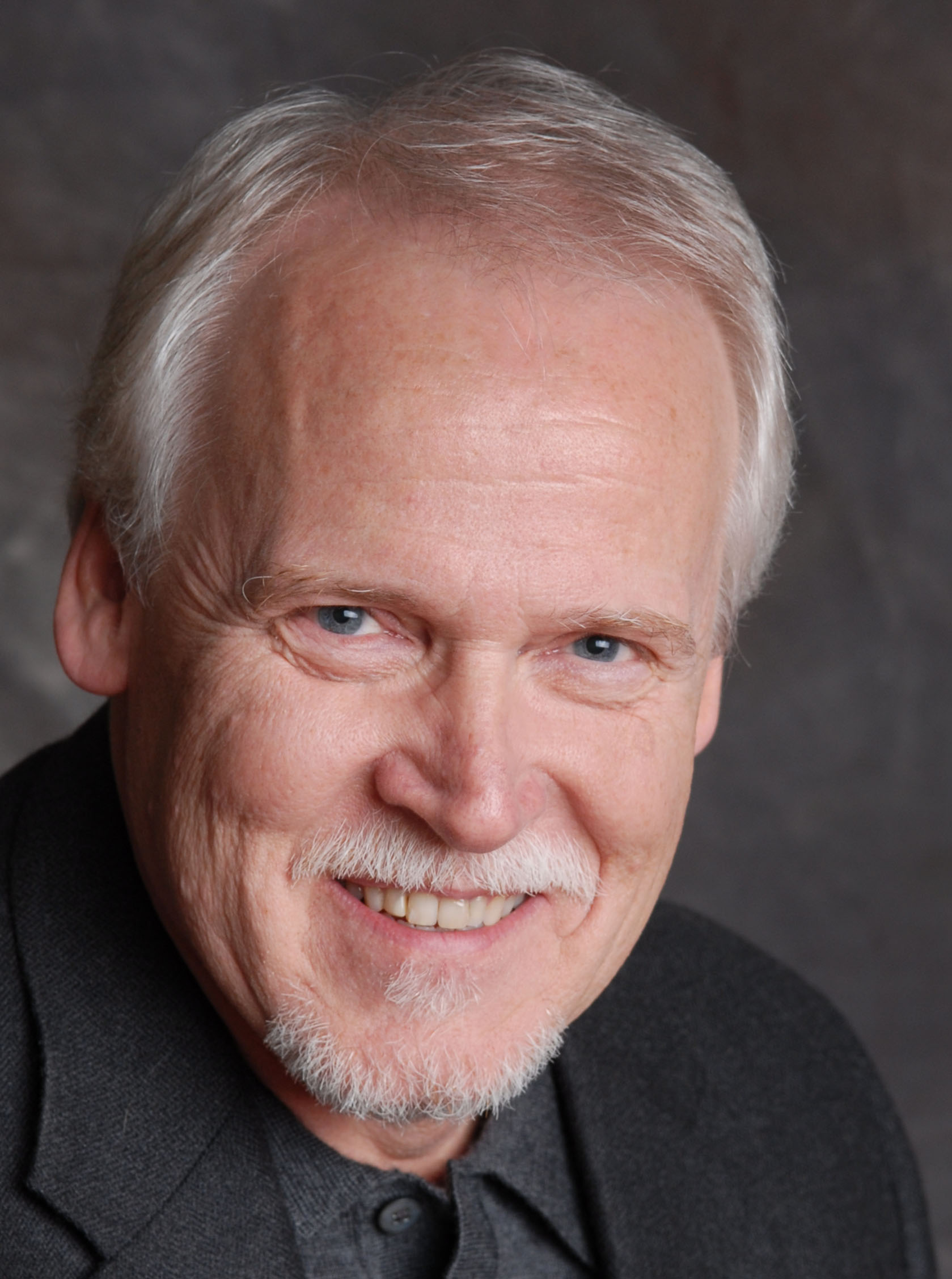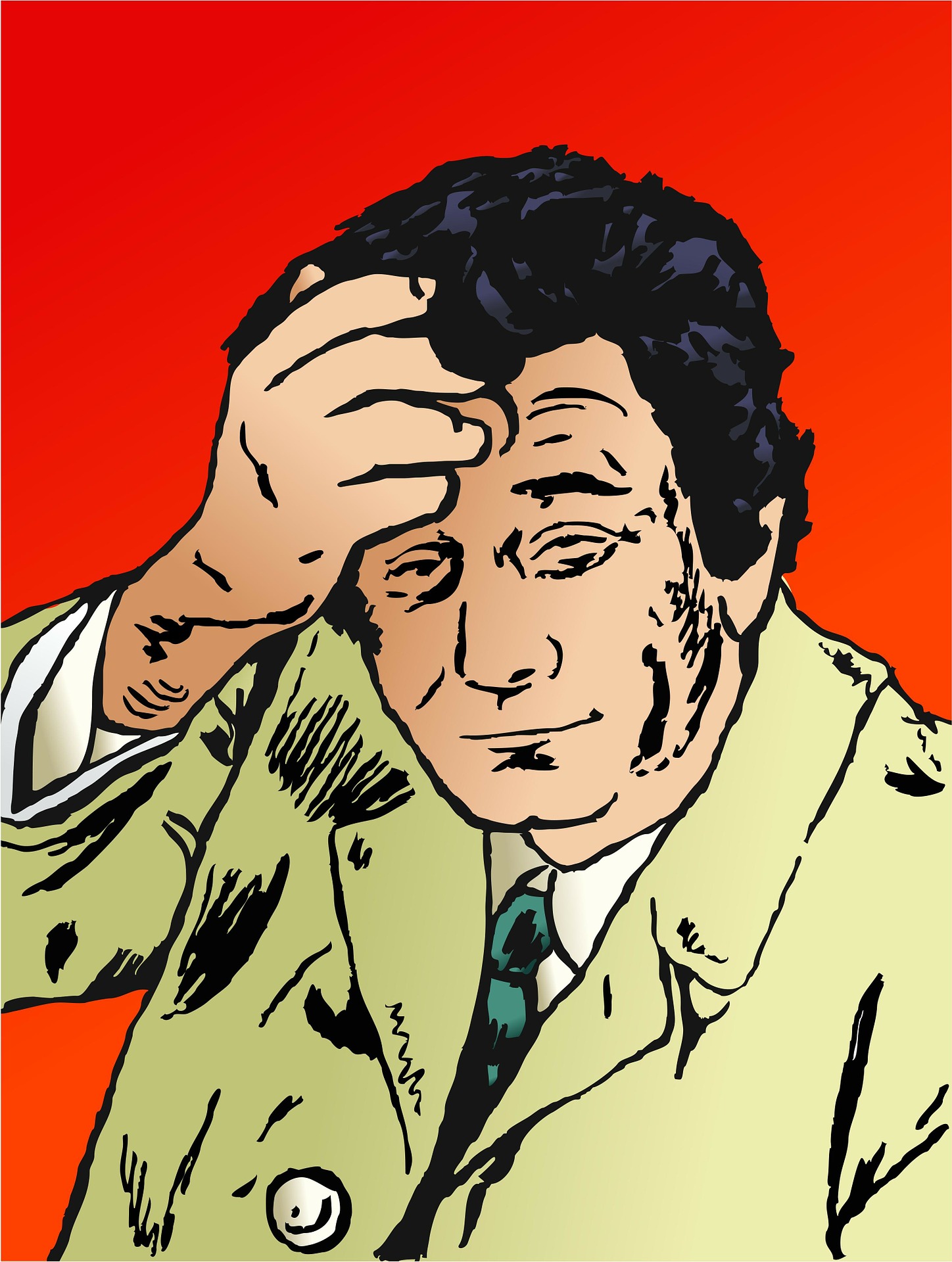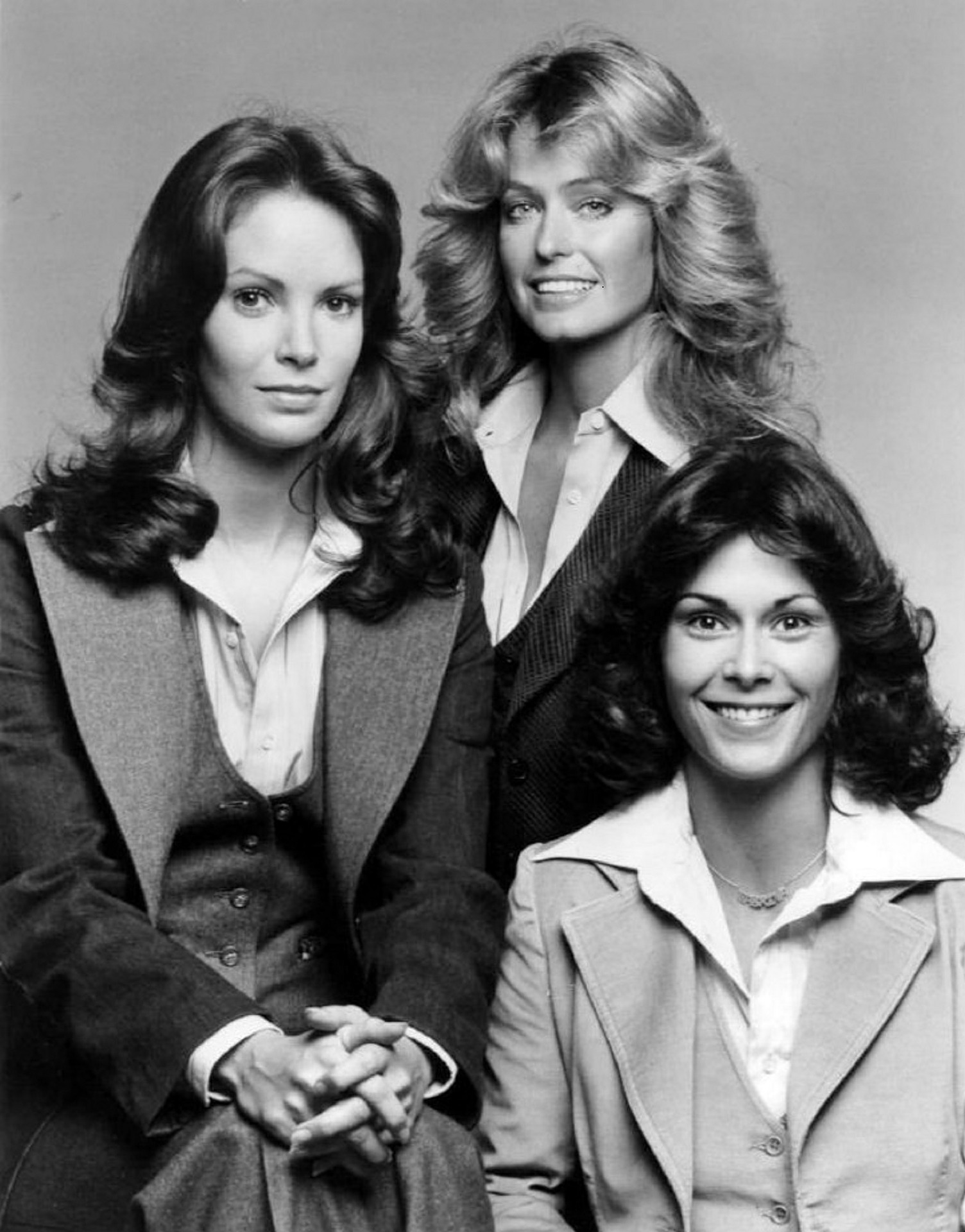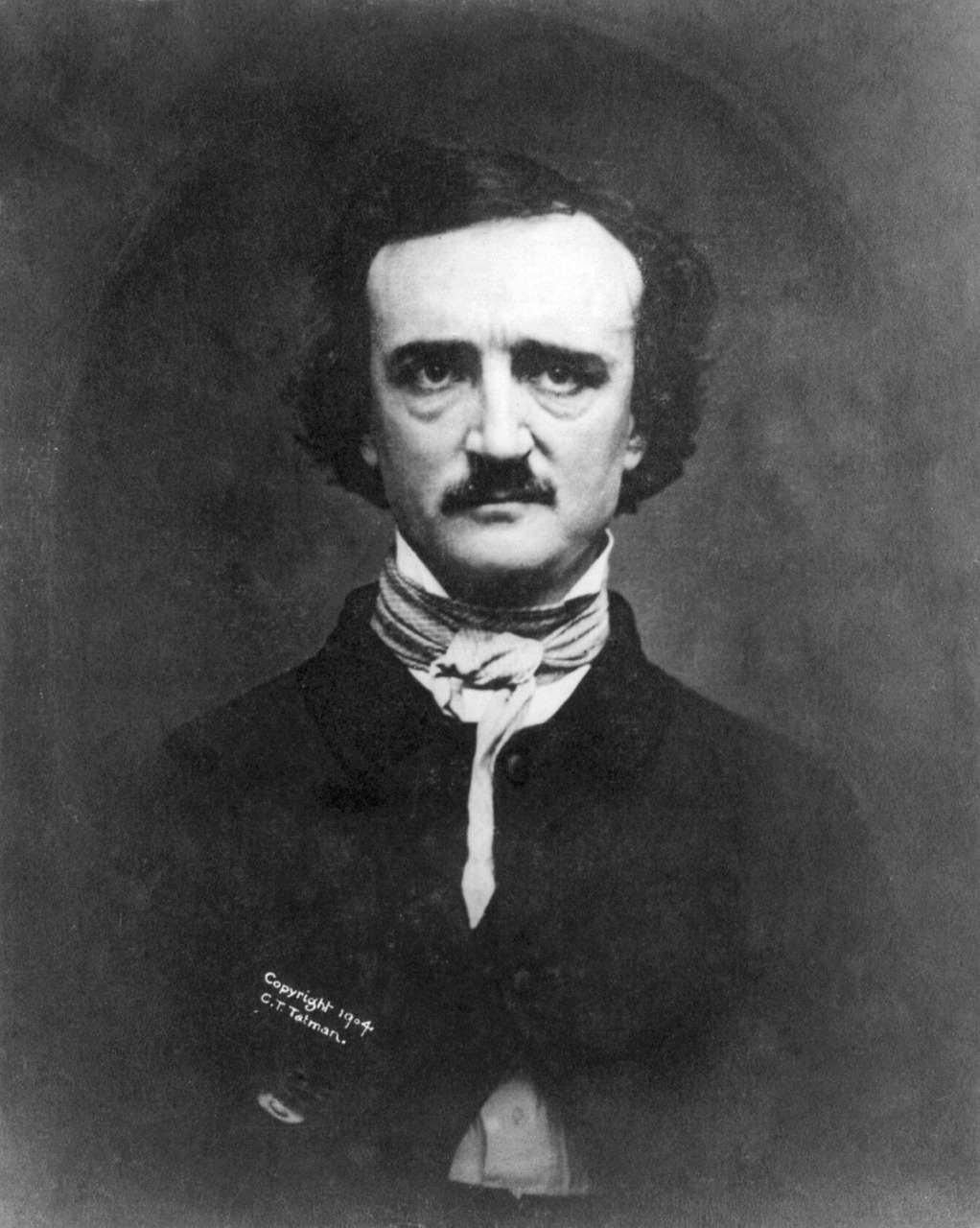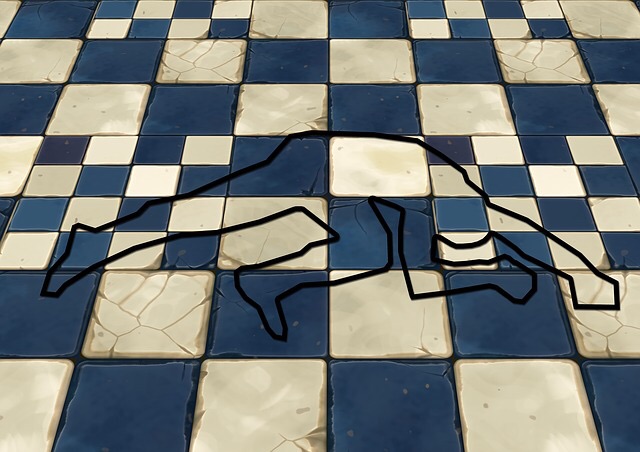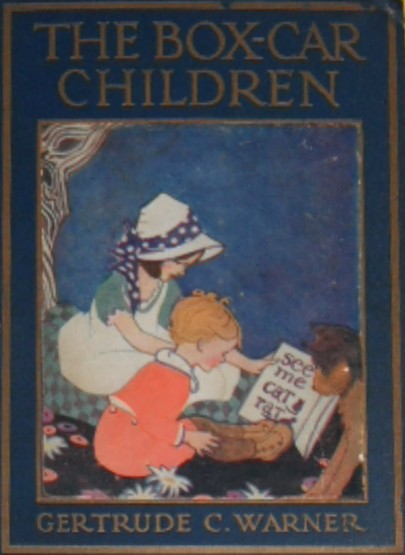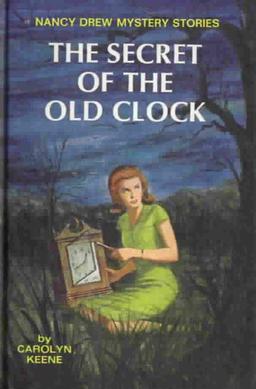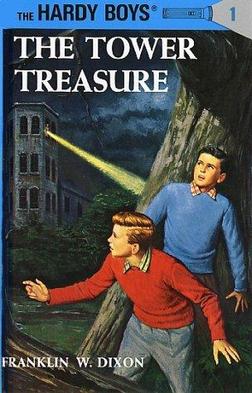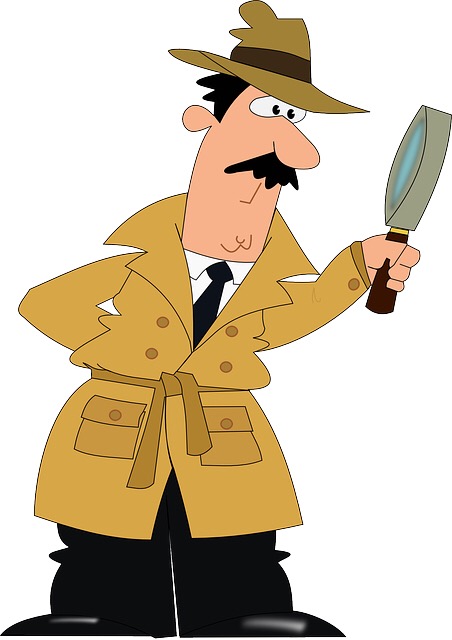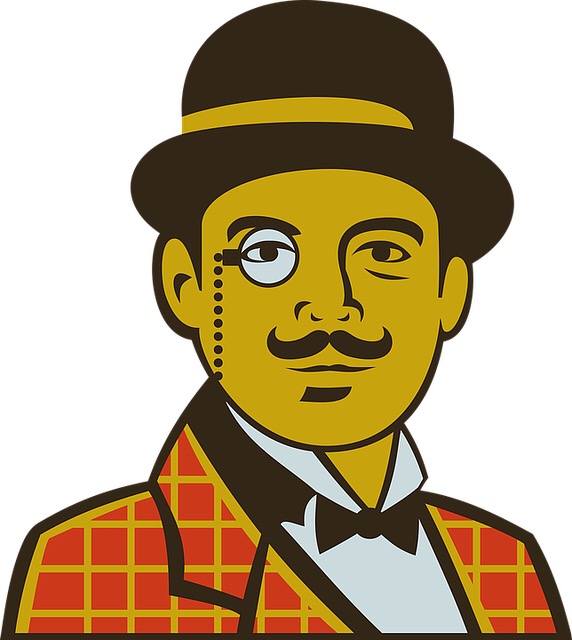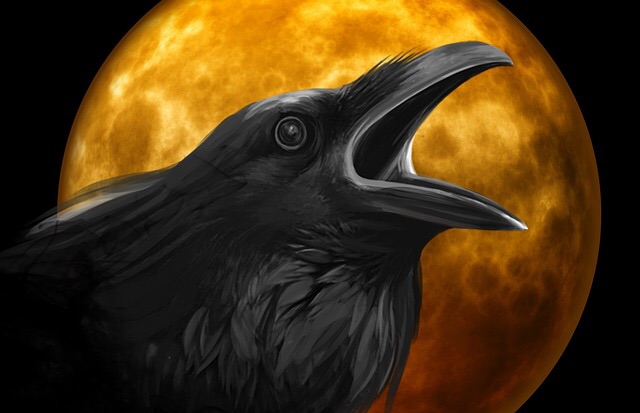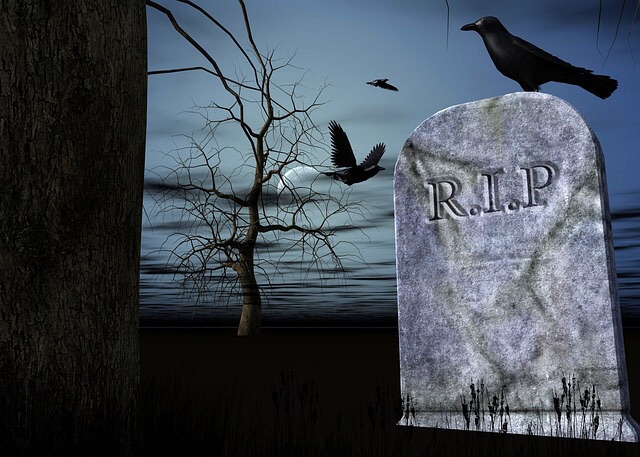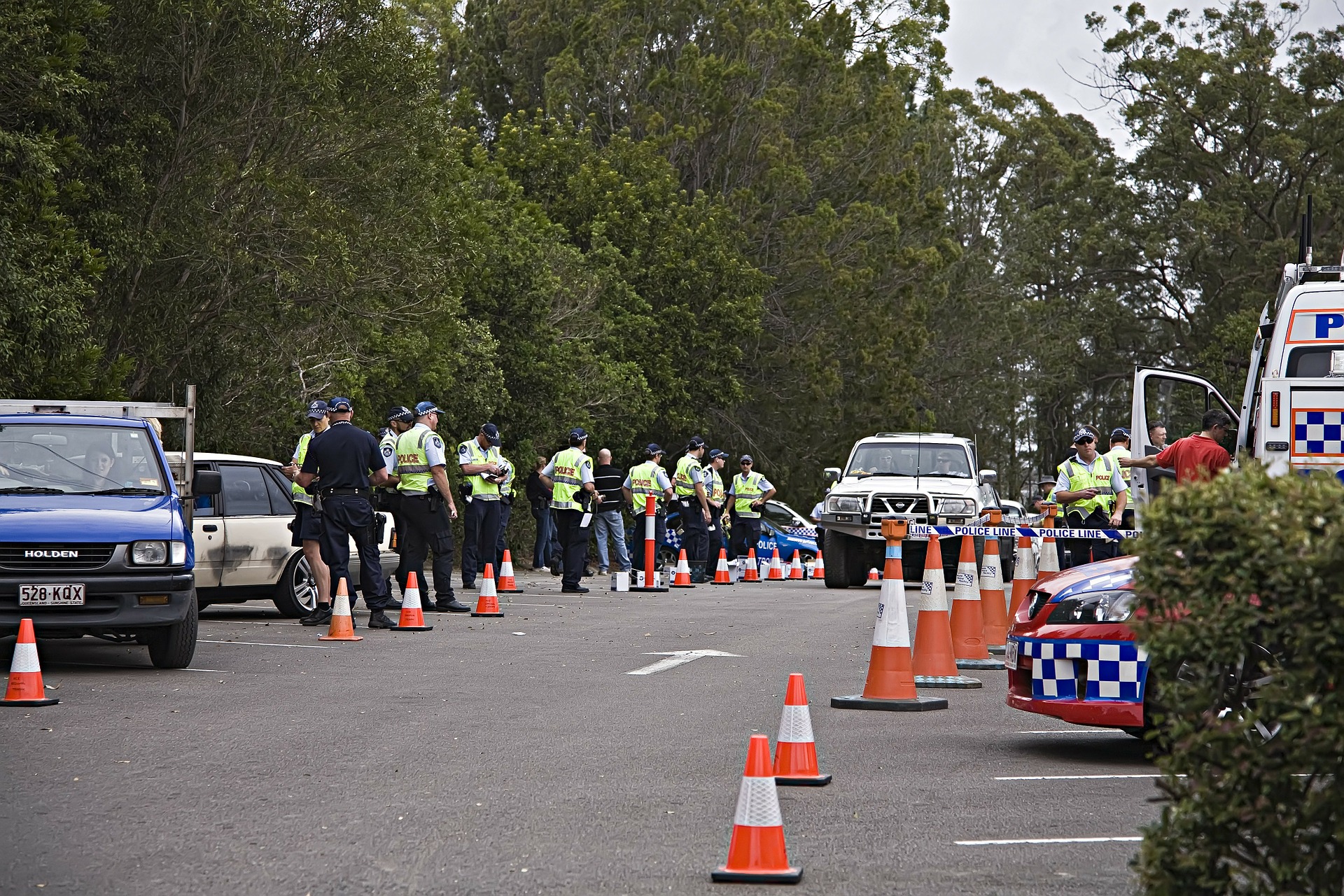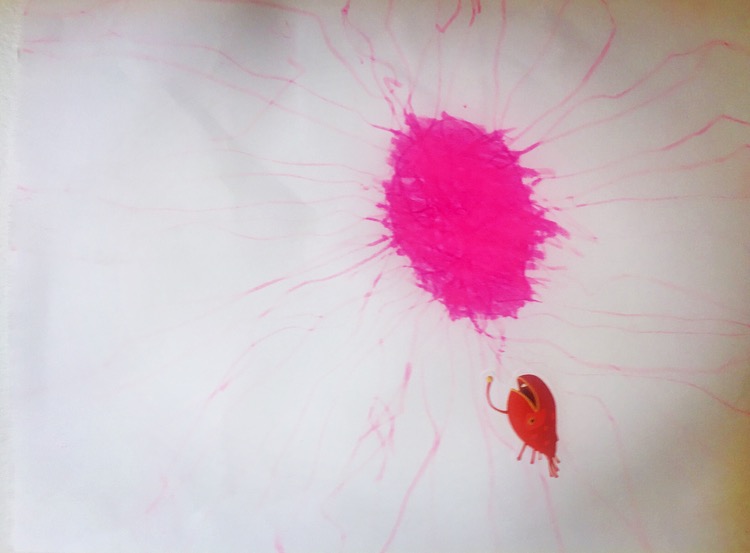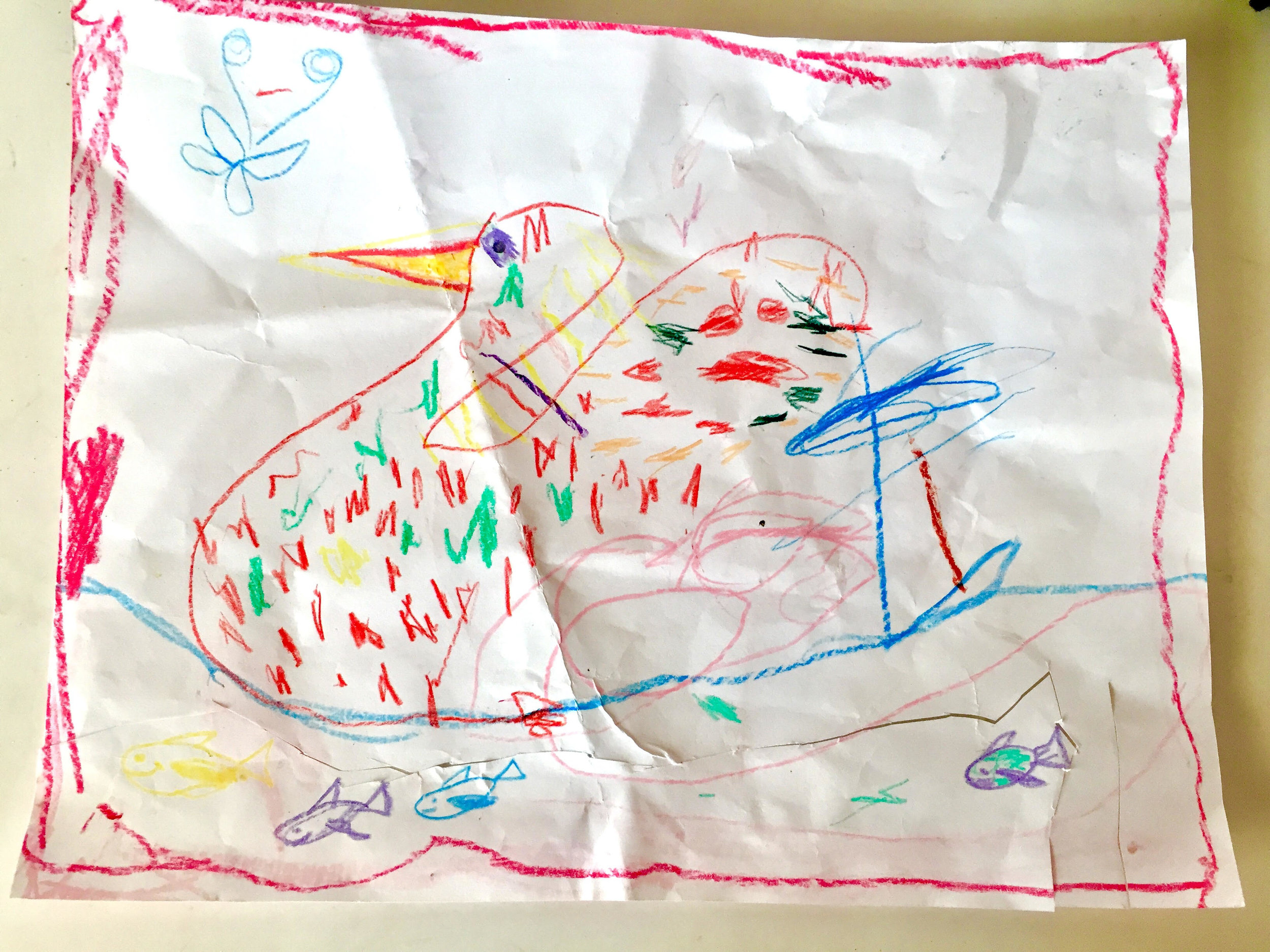Jay Speyerer and I worked on The May issue together. It's a special issue for me because Jay loved a good mystery. It's something we shared as friends and fellow writers. When Jay passed away, some of the contents of our first issues were lost because we were switching to Squarespace and he was in the process of turning the design work over to me. This means some of his brilliant writing will not be in this redesigned issue. Ironically, we switched so our readers would have access to articles from all our issues.
May is mystery month in This Awful-Awesome Life. Who doesn’t love a good mystery- real or fictional? I think it starts from very early childhood. We play peek-a-boo, got your nose, and hide and seek. It never seems to get old because when we have children or are around the children of our friends or relatives, we teach them how to play. I spent many happy winter days pretending not to see or hear the giggling curtains or the lumpy sofa. One mystery I carefully omitted from my list was what happened if you pulled grandpa’s finger, but my sons picked it up somewhere.
When I was a child, our school library was severely limited, so the public library’s Bookmobile visited once a month to supplement our reading choices. Among the stacks of books, I discovered The Secret of the Old Clock, the first book of Nancy Drew mysteries, and my life was changed forever. After reading it, I knew I was going to be a writer, and I knew I’d write mysteries. I remember how devastated I was when I learned Carolyn Keene was not a real person, but the pen name of several different writers who wrote those clever mysteries.
I shared my love of mysteries with my sons. I still have a collection of Where’s Waldo books, and packed away for the next generation to enjoy is a set of The Boxcar Children, Encyclopedia Brown, and assorted Hardy Boys mysteries.
We'll be discussing a few real life mysteries and some of our favorite authors. We’re also excited to introduce you to the works of some talented Pittsburgh writers, and as a special bonus, I reviewed the New B.A. Paris novel, The Break Down which was released in the United States on July 18, 2017. No Spoilers – I promise!
For this issue, I created a Mystery crossword puzzle to challenge you with a little help from Variety Games Inc. Download the page, print it out and let us know how you did. We included the solution on a separate page, but try not to peek. We also have some wonderful guest contributors for our Mystery issue.
Also, we started a random page for anything that isn’t strictly about this month’s theme. We will have your answers to the April photo caption and some adorable artwork from five year old Tae Lani Wigton that we weren’t able to fit in last month’s issue.
Enjoy,
Fran
The contents of this issue will appear in one post, so I have included this Table of Contents to let you know what's here:
The History of the Mystery by Fran Joyce
Edgar Allan Poe and the Genesis of the Modern Whodunit by Orlando Bartro
Three Real Life Mysteries for your Consideration by Fran Joyce
Quote Me on That: Book Blurbs by JJ Hensley
Calling All Mystery Lovers by Fran Joyce
The Big Sleep Kept me up all Night by Fran Joyce
Women of Mystery by Jackie Zataweski
Mysteries at the Bethel Park Public Library - courtesy of the BPPL staff
YA and Children's Mysteries - courtesy of the BPPL Children's library staff
The Red Triangle by Eric Magliocca: A Book Review by Fran Joyce
The May Quiz: Mystery Crossword Puzzle
B.A. Paris' The Breakdown - Why we Love a Psychological Thriller by Fran Joyce
Scout's Photo Captions from Our Readers
The Art of Tae Lani Wigton
********************************************************************************************
The History of the Mystery by Fran Joyce
The development of the mystery genre is often linked to the First Industrial Revolution (1760 to 1840). Great Britain and most of Europe were transformed in the mid-eighteenth century thanks to James Watt’s improvements of steam power and his collaboration with manufacturer/engineer Matthew Boulton to create the rotative engine.
As population shifted to industrial centers, a different type of law enforcement was needed. In local villages, people knew each other and were familiar with village events. The constable or sheriff could easily determine the perpetrator of almost every crime. People from diverse backgrounds living in close proximity to each other and the anonymity of large cities caused crime to increase. Criminals became more sophisticated and harder to catch.
In addition to the development of police forces, specially trained individuals were needed to investigate more complex crimes…the detective was born. Edgar Allan Poe’s Monsieur C. Auguste Dupin in “The Murders in the Rue Morgue” (1841) is believed to be the first detective character to appear in literature.
In 1860, Willkie Collins’ mystery, The Woman in White, was published in Great Britain, and in 1968 Collins published The Moonstone, regarded as the first true English detective novel. Collins’ works were deemed “sensation novels” the precursor to the mystery genre. TS Eliot credited Collins and not Poe with the creation of the detective genre possibly because The Moonstone was a novel whereas “The Murders in the Rue Morgue” was a short story. Novelist Dorothy L. Sayers referred to The Moonstone as "probably the very finest detective story ever written".
In 1878, Anna Katherine Green’s The Leavenworth Case became the first detective novel written by a woman.
These events all predated Sir Arthur Conan Doyle’s creation of master sleuth Sherlock Holmes and his assistant Watson in 1887. Conan Doyle wrote four novels and 56 short stories about Holmes. Movies, television programs, and plays have been created about Sherlock Holmes. Several writers have attempted to write new detective novels about his adventures or have fashioned characters in his image.
Agatha Christie (1890-1976) wrote 66 detective novels and 14 short story collections during her 50 year career. Her characters Miss Marple and Hercule Poirot have delighted generations of readers.
Dorothy L. Sayers’ published Whose Body in 1923. Her character, Sir Peter Wimsey, was a British aristocrat and amateur sleuth. Sayers wrote 11 Wimsey novels and several short stories featuring Wimsey and his family. She often used Wimsey’s wealth and position to poke fun at the aristocracy. In an interview, Sayers claimed to live vicariously through her character by allowing Wimsey to make lavish purchases such as fancy clothing and expensive cars.
Also in the 1920’s and 1930's, the “hard boiled” detectives Sam Spade created by Dashiell Hammett, and Philip Marlowe by Raymond Chandler appeared and were eventually immortalized in film during the golden age of Hollywood.
Author Gertrude Chandler Warner introduced the first book of her classic mystery series written for children, The Boxcar Children, about the adventures of Henry, Jesse, Violet and Benny in 1924.
Publisher Edward Stratemeyer introduced Nancy Drew Mysteries and the Hardy Boys Mysteries for children and young adults in the early 1930’s. In 1933, Erle Stanley Gardner introduced, crime solving attorney Perry Mason. Mason, along with characters, Paul Drake – a private investigator and Della Street – Mason’s loyal secretary, proved his client’s innocence while exposing the real murderer much to the annoyance and amazement of his rival, District Attorney Hamilton Burger. In 1959, Perry Mason became a television program. It lasted 10 seasons and inspired other legal programs and police procedurals.
I, the Jury by Mickey Spillane introduced detective Mike Hammer in 1947. Also during the 40’s, radio programs such as “Suspense” and “The Shadow” delighted thousands of eager listeners.
Mysteries have continued to grow in popularity in part because of clever television shows and Hollywood adaptations of classic mystery novels. Readers can enjoy variations of the detective mystery, legal thrillers, medical thrillers, cozy mysteries, paranormal, science fiction, or dystopian mysteries as well as true detective/crime novels.
I remember watching The Fugitive and Columbo on TV, Saturday Scooby Doo cartoons, and going to the movie theater to watch The Pink Panther. As I grew up, Nancy Drew was replaced by adult amateur sleuths and private detectives, but I never lost my love for mysteries.
There have been some interesting real life mysteries, too. Where is DB Cooper? Did I just park on Jimmy Hoffa? Who drank all the milk and put the empty carton back in the fridge? Some events were fodder for conspiracy theorists who attempted to create a mystery from that event or offer up an explanation to a long unsolved mystery. I’m not big on real-life conspiracy theories, but in the hands of a gifted writer, a good conspiracy can fuel some interesting story lines.
I own collections of works by Edgar Allen Poe, Sir Arthur Conan Doyle, Agatha Christie, Raymond Chandler, and Sue Grafton. As I began to run out of room on my book shelves, I turned to my local libraries (all 15 moves worth) and discovered the colorful characters, Agatha Raisin, KoKo and Yum Yum, Stephanie Plum, and true crime novelists Dominick Dunne, Vincent Bugliosi, and Ann Rule. Whether it’s hard boiled detectives Philip Marlowe and Sam Spade, nuanced professionals such as Sherlock Holmes and Hercule Poirot or busy bodies like Miss Marple, I have enjoyed the characters and storylines created by gifted writers.
Nancy Drew book jacket image: By Source, Fair use, https://en.wikipedia.org/w/index.php?curid=22484930
Hardy Boys book jacket image: By Source, Fair use, https://en.wikipedia.org/w/index.php?curid=22634402
*****************************************************************************************
Edgar Allan Poe and the Genesis of the Modern Whodunit By Orlando Bartro
The crossword puzzle, once solved, loses its allure.
How enticing it had been, with its initial grid of blanks, and then its scattered intersecting answers, a word here, a word there, a mysterious letter z that suggested ten possibilities—and now it lies dead on the page, a tombstone of disembodied words.
But Edgar Allan Poe might have seen the finished crossword puzzle as a puzzle itself. Who completed it? What might the handwriting indicate? Are there any erasures? Which words were guessed first? Might these clues suggest anything about the psychological profile of the solver?
Poe liked puzzles of all kinds, from the inner workings of Maelzel’s supposed automata, which purported to be a machine that played chess (but probably hid a fleshy little man)—to geometric puzzles such as the one in The Narrative of Arthur Gordon Pym of Nantucket—to ciphers, one of which prominently appears near the end of “The Gold Bug.” It was, therefore, a predictable—though surprising—leap to make an entire story into a puzzle.
He invented the modern whodunit with “The Murders in the Rue Morgue,” a short story published in 1841. Monsieur C. Auguste Dupin, the sleuth in the story, has had numerous direct descendants, including the slender and fastidious Sherlock Holmes, whose mind was like a neat attic, storing only what was necessary for solving crimes. Sherlock Holmes, in his turn, became the most popular model for the subsequent detectives and curious busybodies who solve murder cases in delightfully ingenious ways.
The whodunit is now a well-worn genre, but with many fresh plots remaining to be found along its cemetery walkways.
In 1957, Robbe-Grillet elevated the whodunit to an experimental art form with Jealousy, a story so puzzling that many readers enjoy it without noticing that someone’s been murdered. It’s the perfect crime . . . until finally a puzzle-loving reader unearths a corpse being eaten by isopods. The lugubrious Poe would have approved.
*Orlando Bartro is the author of Toward Two Words, a novel about a man lost in a Mansion of Left Turns who finds yet another woman he never knew, available at Amazon. He is currently writing two new novels and a play. You can hear more of his insights into fiction at the Grassy Elbow at Youtube.
*****************************************************************
Three Real Life Mysteries for Your Consideration By Fran Joyce
Where do you start when talking about real life mysteries? What do you include, and what can you in good conscience leave out?
Where, exactly, was the Garden of Eden? What happened to the Ark of the Covenant? Are Atlantis, Lyonesse, and the continent of Lemuria actually buried under the sea waiting to be discovered? What about the lost cities of Aztlan, “Z”, and El Dorado, or the lost colony of Roanoke? If we find “Z”, will we learn the fate of the Percy Fawcett expedition that vanished in a Brazilian jungle in 1925?
What about the Bermuda Triangle, crop circles, Roswell, or the conspiracy theories concerning the assassinations of Abraham Lincoln, John F Kennedy, Martin Luther King Jr., Malcolm X, or Robert Kennedy?
Over 211,000 homicides committed in the U.S. since 1980 remain unsolved. In one third of all murders, police fail to make an arrest. The homicide rate has been dropping since 1990, but homicides are less likely to be solved today than they were 40 years ago. Investigations are expensive and often hindered by a shortage of police personnel to provide the necessary man hours.
There are approximately, 90,000 missing persons in the U.S. at any given time. According to the National Missing and Unidentified Persons System, 40% of those missing are juveniles.
Where is Jimmy Hoffa? Who killed Jon Benet Ramsey? What happened to the hijacker, known only as D.B. Cooper, of a Boeing 747 somewhere between Portland and Seattle? What was the fate of Amelia Earhart? Will Natalie Holloway’s family ever really know what happened to her?
After the death of his wife in 1847, rumors circulated about Edgar Allan Poe’s drinking and erratic behavior. On October 3, 1849, Poe was found delirious on the streets of Baltimore dressed in someone else’s clothing. He died at a local hospital on October 7, 1849. Poe never fully regained consciousness, but allegedly called out the name “Reynolds.” There was no one in his circle of acquaintances with that name. All medical records including his death certificate were mysteriously lost.
Doctors have speculated his death at 40 was caused by alcoholism. Some theorize Poe was the victim of “cooping”, a form of voter fraud where random citizens were abducted, taken to polling locations, and forced to vote for certain candidates. Many were forced to change clothing with other victims to alter their appearances at the polls.
Ambrose Bierce was an American Civil War soldier, author, journalist, and literary critic. His most acclaimed works include The Devil’s Dictionary and the short story, “An Occurrence at Owl Creek Bridge.” In December 1913, Bierce reportedly went to Chihuahua, Mexico to gain first-hand experience of the Mexican Revolution by travelling with rebel troops. He was never heard from again.
Skeptics doubt the 71 year old Bierce, who suffered from severe asthma, was healthy enough to make the trip. Letters from Bierce to his niece Lora indicate his intention to go and his desire to die in the pursuit of something instead of waiting idly for death to come. Bierce stated in his first letter, “To be a gringo in Mexico—ah, that is euthanasia.” His final letter was dated December 26, 1913.
Theories suggest Bierce was executed by Poncho Villa’s men, or he became ill and after his death, rebels buried him somewhere in Mexico. Another theory suggests Bierce settled in Mexico and lived the remainder of his life in anonymity. The Old Gringo by Carlos Fuentes offers a fictionalized account of his disappearance.
In 1926, Agatha Christie disappeared after her husband, Archie asked for a divorce. A heated argument ensued; Archie left to be with his mistress, Nancy Neele. Christie disappeared after leaving a note for her secretary saying she was going to Yorkshire. Christie’s abandoned car, expired driver’s license and clothes were later found at Newlands Corner. A newspaper offered a reward. One thousand police officers, 15,000 volunteers and several aircraft searched for Christie who was eventually found at the Swan Hydropathic Hotel registered as Mrs. Teresa Neele (the surname of Archie’s mistress).
Christie was diagnosed with Fugue State, probably caused by overwork and depression over the death of her mother the previous year and her husband’s infidelity. Fugue State, a rare temporary psychiatric disorder is characterized by reversible amnesia for personal identity. It often involves unplanned travel or wandering, and the establishment of a new identity.
Some angry fans labeled her disappearance a publicity stunt and others believed Christie was trying to embarrass her husband or frame him for her murder. Christie’s autobiography, published posthumously in 1977, makes no reference to her disappearance.
So, there you have it…three real life mysteries about three authors. If you could solve only one of these mysteries, which one would you choose? Send us your thoughts with the subject heading “which one” in an email to fg83cj@gmail.com. Feel free to send us “your solution” and maybe we’ll print it in an upcoming issue of This Awful/Awesome Life.
Sources: www.ancient-origins.net (5 Lost Cities -story by April Holloway)
America’s 60 Greatest Mysteries and Crimes Season 1 (DVD)
donswaim.com
Wikipedia
**************************************************************************************
Quote Me on That: Book Blurbs By JJ Hensley
One of the many misconceptions I had when I first discovered I was going to be a traditionally published novelist was that most of my work would be complete once I had written the book. After all, I was the author, not the publisher and certainly not the publicist. Surely, the publisher would have a team of experts analyze market conditions, write the eye-catching cover copy (the hard hitting teaser inside the book jacket), and collect praise-filled testimonies from world-famous authors who would swear on a stack of Raymond Chandler paperbacks that my debut novel, Resolve, was going to redefine the mystery genre.
Yeah, well… the publisher had a small staff knowledgeable about the publishing business, but there were no teams of hungry marketing professionals itching to help me take the publishing world by storm. Most of the marketing—social media, websites, setting up interviews, scheduling book signings—that was all going to be on me. I was the one asked to write the cover copy. And it turned out the publisher did not see a lot of value in collecting those testimonials from other authors, commonly referred to as blurbs. That too, fell on me. Other than some positive reviews from Publishers Weekly, Booklist, and a few other publications, I had nothing for the back cover. It occurred to me that I should contact all my friends in the writing community to see if any of them would be willing to give the manuscript a quick look and provide some words that would promise the reader a good story filled the pages of the book. Then it occurred to me that I was a first-time novelist and that I had no friends in the writing community. That is when I took a leap of faith and the writing community showed me generosity in a business that can be unforgiving.
One of my favorite authors of all time is James Grady of Six Days of the Condor fame. If you have not read the book then you probably saw the movie Three Days of the Condor. I guess six days was too much for Hollywood. Anyway, I nervously drafted several emails to Mr. Grady, deleted them, and then wrote them again. Finally, I decided on a final version that I would send to this man I had never met. Then I deleted that one too. But, I did eventually get up the nerve to write him to request that he allow me to send him my manuscript and that I would be delighted if he would provide a blurb. Much to my surprise, he responded and was willing to take a look at the book. Having developed some confidence, I did the same with internationally bestselling author John Verdon. He too agreed. Within a couple of months, I had two blurbs from two fantastic authors, neither of whom I had ever met.
Since my debut novel, I have been fortunate enough to meet many other writers which has made the blurb process somewhat easier, although I am still always uncomfortable making the requests. However, it is part of the business and if one blurb convinces a reader to buy your book then that is one more reader than you had previously. There are still many people out there who question the value of a blurb. Does it really give your work any more credibility? Will it help you sell copies of your work?
I do not know. But I know that no matter what, some of my heroes have had enough faith in my work that they were willing to attach their names to my stories. So later on when I see that reader review on Amazon that gives my book 1 star because UPS left the package containing the book in the rain or 2 stars because the narrator of the audiobook mispronounced a street name, I can simply shrug it off and tell myself: “Whatever. James Grady didn’t complain.”
J.J. Hensley is the author of RESOLVE, a Thriller Award finalist which is set against the backdrop of the Pittsburgh Marathon, Measure Twice, Chalk’s Outline, and other works. Hensley is a former police officer and former Special Agent with the U.S. Secret Service. He lives with his family near Pittsburgh, PA. His fourth novel, Bolt Action Remedy is scheduled for release on October 2nd, 2017.*
Bolt Action Remedy is now available on amazon.com and bookstores everywhere.
***************************************************************************
Calling all Mystery Lovers By Fran Joyce
No mystery issue in Pittsburgh would be complete without mentioning Mystery Lover’s Bookshop.
The shop was founded over 26 years ago by Mary Alice Gorman and Richard Goldman. It is located in the heart of Oakmont's business district. The shop specializes in mystery, but also offers a nice selection of non-fiction and children's book, games, puzzles, and other interesting items.
In 2015, Trevor Thomas and Natalie Sacco purchased the shop. Natalie grew up in Oakmont, and had come to the bookstore as a child. According to Natalie, “When we saw that is was for sale, we knew the shop had to remain open in the community, so that we could continue to serve lovers of all kinds of books.”
Mystery Lover’s Bookshop has a local Pittsburgh section that includes mystery authors and other local authors. They carry titles by Annette Dashofy and Nancy Martin (two of our featured authors from last month) plus other authors in the local chapter of Sisters in Crime. They also carry an assortment of books about Pittsburgh.
Special orders are no problem. No matter where you live in the United States, you can call (412-828-4877) or email (info@mysterylovers.com) the bookshop about a title you are trying to locate. If the book you want is still in print, they will locate it and ship it to you.
Mystery Lovers Bookshop also sponsors five book clubs that meet regularly at the shop. All the groups have met in the store for ten years or more and welcome new members at any time.
1. Wednesday A.M. Book Club - reads all varieties of fiction and non-fiction including some mystery titles. Meetings are the 2nd Wednesday of each month at 11am.
2. Monday Mystery Book Club - meets at 6pm on the second Monday of each month. The club is open to anyone with an interest in mystery books.
3. Friday Book Club - meets at 12pm on the last Friday of each month. The club is open to anyone with an interest in mystery. Dubbed the “No Lunch Bunch,” the group meets at the shop and ventures to a nearby restaurant for lunch after the discussion.
4. History Mystery Book Club - meets at 5pm on the second Tuesday of each month. The club is open to anyone with an interest in historical mystery.
5. The Eclectic Book Club - reads a variety of books including mystery, science fiction, and literature. Regular meetings are on the last Wednesday of each month at 6:30pm.
If you’re interested in receiving more information on book clubs, please call the shop at 412-828-4877 or 1-844-303-1418.
In addition to book clubs, Mystery Lovers Bookshop sponsors monthly events such as book signings and writing/publishing workshops.
On Saturday, May 13 at 2:30pm, they hosted a self-publishing workshop.
Saturday, June 17 at 10:30am don’t miss “Coffee & Crime” with Kristen Lepionka.
You can find a full list of events on their website.
Special thanks to Natalie Sacco for her help with this article. Be sure to visit Mystery Lovers Bookshop at 514 Allegheny River Boulevard in Oakmont, PA. Call 1-855-235-1728 with questions or visit their website, http://www.mysterylovers.com to read their blog or place an order.
***************************************************************************
The Big Sleep Kept me up all Night By Fran Joyce
Raymond Chandler is best remembered as the creator of the hard-boiled private detective, Philip Marlowe. Marlowe makes his debut in The Big Sleep, Chandler’s first novel.
The Big Sleep was published in 1939 when Chandler was 51. Most people have either read the book or watched the 1946 film version starring Humphrey Bogart as Marlowe. The movie version, though excellent, is missing vital parts of the story.
The Hays Office of the motion picture industry rigidly monitored film content. Sexual references were severely restricted and any mention of homosexuality was forbidden. The screenplay was expertly crafted by William Faulkner (yes, that William Faulkner), Leigh Brackett, and Jules Furthman to retell the story within the Hay office’s guidelines.
In The Big Sleep, Marlowe is hired by wealthy retired General Sternwood to locate some compromising photos of the general’s youngest daughter, Carmen. Marlowe uncovers a pornography ring run by a man named Geiger who is gay. Geiger’s sexuality and passages identifying Lundgren as his lover are carefully omitted from the movie. Carmen’s wild behavior is carefully alluded to, but not shown.
Critics of Chandler’s work are quick to a malign his depictions of gays, women, people of color, and many ethnic groups. Women were beautiful, diabolical, and often unstable. People of color and certain ethnic groups were often stereotyped and often cast as criminals.
While Chandler’s depictions of Geiger and Lundgren are not kind, his books provide a mirror to his time. This is how people felt and behaved. It’s easy to be offended, but try to see Chandler as a prisoner of his time. Devour his rich prose as “word candy” and admire his skilled use of simile and metaphor.
According to Chandler, “Had my books been any worse, I would not have been invited to Hollywood, and if they had been any better, I would not have come.”
Chandler was born in 1888. After he and his mother were abandoned by his alcoholic father, they moved from Chicago to Croydon in England to be near family. Chandler was classically educated at Dulwich College London, an elite public school (P.G. Wodehouse and C.S. Forester were also alums).
His first published work in 1907 was a poem. Though Chandler continued to write romantic poems, he pursued a career in civil service, before an unsuccessful stint as a journalist.
After moving to the United States, Chandler enlisted in the Canadian Expeditionary Force and saw combat in France during World War I. He worked his way up to a vice presidency in an oil company, but was dismissed for excessive use of alcohol and absenteeism as well as his penchant for office romances. Like his father, Chandler battled alcoholism most of his adult life.
Unemployed with few prospects during the Great Depression, Chandler, who was a fan of pulp magazines, studied the work of Erle Stanley Gardner to learn how to write it. He submitted “Blackmailers Don’t Shoot” to the Black Mask. He was paid $180 for 18,000 works and began his writing career at age 44. Dashiell Hammett and Ed McBain were also writers at Black Mask.
Chandler often struggled with the rigid formula demanded by the editors of the pulp magazine, but he was grateful to finally be a successful writer. In an interview, he admitted, “To exceed the limits of a formula without destroying it is the dream of every magazine writer who is not a hapless hack.”
He received an Academy Award nomination for “Best Writing” in 1944 for the screenplay of Double Indemnity, which he co-wrote with Billy Wilder and a second nomination in 1946 for Best Writing for his original screenplay, The Blue Dahlia.
Chandler died in 1959 after writing four chapters of his eighth book which he gave the working title, Poodle Springs. The chapters were published in 1962 in Raymond Chandler Speaking, a collection of excerpts from letters and unpublished writings. In 1988, to commemorate what would have been Chandler’s 100th birthday, his publishers commissioned Robert B. Parker to complete the book. Parker, a fan of Chandler, understood Marlowe’s character. After the publication of Poodle Springs, Robert B. Parker secured permission from Chandler's estate to write a final novel featuring Philip Marlowe. Perchance to Dream, the sequel to The Big Sleep was released in 1991.
Chandler wanted to be cremated like his wife Cissy who passed away in 1954, but failed to leave instructions in his will, so he was buried at Mount Hope Cemetery in San Diego. In 2011, Cissy’s ashes were intermed with Chandler. Their shared gravestone bears this quote from The Big Sleep, “Dead men are heavier than broken hearts.”
****************************************************************************
Women of Mystery By Jackie Zataweski
Women come in all shapes and sizes. You find them in all walks of life and in a vast array of professions. It should come as no surprise that “Women of Mystery” are no different. Although Anna Katharine Green wrote the first American mystery novel in 1878 (The Leavenworth Case), it was decades before mysteries by female authors became if not common, at least more readily accepted. It has been nearly 100 years since Agatha Christie’s first book was published, and my, how times have changed!
Just as women have varied careers, so do the lead characters in today’s mystery novels. If you enjoy legal thrillers like those of John Grisham, you might give former New York prosecutor Linda Fairstein a try…her Alex Cooper series features an Assistant District Attorney. Lisa Scottoline, too, has a background in law, and this is reflected in her Rosato & Associates series.
On the other hand, if you’re the outdoorsy type and enjoy CJ Box’s Joe Pickett books, you could try Nevada Barr’s Anna Pigeon series. Ms. Barr was herself a Park Ranger before turning to writing full time, and her books are set in National Parks. Dana Stabenow, too, entwines both her background and the great outdoors with her writing. Stabenow was born and raised in Alaska, and her Kate Shugak books have that state as a setting.
There are, of course, many mysteries about women in law enforcement…Alex Kava’s Maggie O’Dell series and Lisa Gardner’s D.D. Warren series are just two that come to mind. There is no shortage of books with female investigators, either – Sue Grafton’s Kinsey Millhone series debuted in 1982 with A is for Alibi, and Y is for Yesterday will be released in August.
Of course, not all investigators are professionals…at least not in the world of fiction. You might be surprised by the number of murders a caterer (Diane Mott Davidson’s Goldy Bear) or a dog trainer (Susan Conant’s Holly Winter) stumble upon, and they aren’t the only ones. Genealogists (Charlotte Hinger’s Lottie Albright), librarians (Charlaine Harris’ Aurora Teagarden), and scrapbook enthusiasts (Lauren Child’s Carmela Bertrand) have this problem, too.
My favorites, I think, are those with characters that might be considered a little unusual. Carol O’Connell’s Mallory is one such lead character, and I’ve been following her exploits for more than 20 years. Grace McBride, a central figure in the Monkeewrench series by mother/daughter writing team P.J. Tracy, is a another, more recent find, but equally enthralling.
Whether you prefer light reading – a mystery that can make you laugh as well as think – or more serious stuff, the perfect book is just waiting for you. If you need help finding it, ask a librarian!
Jackie Zataweski is the director of the Nottoway County Library in Crewe, Virginia.
*********************************************************************************
Find Your Next Great Mystery at the Bethel Park Public Library
The Bethel Park Public Library not only has a large collection of Mystery Fiction (including ebook and e-audio format), but a Mystery Book Club (day and evening), access to databases with Mystery book reviews, read-alikes and author bios!
Bill Pronzini, considered a master of the genre, has many items in the Library’s collection. In fact, the Library’s Mystery Book Club selection for the May 17th 7pm meeting is The Other Side of Silence. This stand-alone thriller finds former MP now security guard hiding from himself in Death Valley who happens upon a dying woman whose story will lead him into the underbelly of Las Vegas. Rich characters and unexpected twists make this a fan favorite. Bill Pronzini is also known for his series featuring the Nameless Detective (start with The Snatch). Married to another famous writer, Marcia Muller, he co-authors a Historical Mystery series set in 1890 San Francisco with her.
Pronzini’s crime novels are typically known as “Hardboiled Fiction”. This specific genre usually features tough or cool heroes with a tendency towards violence, gritty settings, and private detectives working alone and clashing with police. Many trace this sub-genre back to Edgar Allen Poe and his story Murders in the Rue Morgue. There are many authors who share this style. Judith A. Jance’s crime fiction can have similar characters whose life experiences and backgrounds come into play. Author Robert Crais, who has received the Mystery Writers of America’s Grand Master Award, writes the Elvis Cole series whose title character is a refreshing take on the hardened sleuth. The Alex McKnight series by author Steve Hamilton can also be compared to Bill Pronzini’s work. Character driven and fast pasted, these thrillers are set in desolate locations and explore the dark side of humanity. Readers looking for Hardboiled Fiction with a twist, may tray Dan Simmons. His work has many of the same detective drive characteristics but also include some horror and science fiction. The Terror and Hard as Nails are available at the Bethel Park Public Library.
Whether you are a fan of gumshoe mysteries or not, the Library has something for you! Our mystery collection has the classics, true crime, whodunits, and more.
*********************************************************************************************
YA and Children's Mysteries at the Bethel Park Public Library
Submitted by The Children’s Department at BPPL
Young Adult
The Body Finder, by Kimberly Derting
Black Ice, by Becca Fitzpatrick
Stalking Jack the Ripper, by Kerri Maniscalco
I'd Tell You I Love You, but Then I'd Have to Kill You (the Gallagher Girls series), by Ally Carter
Caraval, by Stephanie Garber
The Maze Runner, by James Dashner
Children
Escape from Mr. Lemoncello's Library, by Chris Grabenstein
The 39 Clues series, by Rick Riordan
The Mysterious Benedict Society, by Trenton Lee Stewart
The Westing Game, by Ellen Raskin
Jigsaw Jones series, by James Preller
Where's the Big Bad Wolf? by Eileen Christelow (picture book)
*********************************************************************************************
The Red Triangle by Eric Magliocca: Reviewed by Fran Joyce
Eric Magliocca’s mystery thriller, The Red Triangle, debuted in 2013. The Red Triangle, an actual area off the Pacific coast near San Francisco, is known for its large populations of seals, sea lions, and great white sharks.
It is adjacent to the fictitious town of San Sangre where wealth, infidelity, and murder make its inhabitants as dangerous and unpredictable as the waters there. It is here that Conrad Mayday must confront the rumors swirling around his wife’s life and untimely death.
Filled with surprising plot twists and complex characters, Magliocca’s first novel packs an adrenaline rush sure to please even the most seasoned reader of the genre.
Magliocca grew up in the Pittsburgh area. He attended Upper St. Clair High School, Washington and Jefferson College, and The University of Pittsburgh where he earned a Master’s Degree in Education.
He teaches eighth grade English at Fort Couch Middle School in Upper St. Clair. Not a bad day job for a writer.
According to Magliocca, “I grew up loving books and movies. I wanted to be a director/screenwriter. I considered pursuing a career in film direction and screenwriting, but news of the grim job market for the film industry wore me down. My cousin, Marcia Licata, a Spanish teacher at a local high school, helped me in those early stages of my decision making to become a teacher.”
Instead of giving up on his dream to become a screenwriter, Magliocca decided to make the transition to novelist. He credits another family member, his cousin Joey David with inspiring him to pursue his dreams.
“I always admired his success, his devotion to his practice, and his founding of David Physical Therapy and Sports Medicine Center. His pursuit of a dream and making that dream a reality motivated me to give the same effort and devotion toward my dream.”
Magliocca started writing The Red Triangle in 2008, shortly before he began his teaching career. In early 2012, he started sending query letters to publishers. He attracted the interest of Charles Towne Publishing who opted to publish his book.
“The hardest part of the writing process is what you do after finishing your book. Writing a query letter, which requires you to summarize your book in a paragraph that doesn’t give away too much but still pulls a reader in, is probably the hardest thing I have ever done in this profession. It’s pretty ironic, but writing a book is FAR easier than writing that paragraph.”
The next hardest thing for Magliocca was the editing process. “I figured the editors at the publishing house would take my manuscript, change it, and voila, a book is ready. That’s not how it works. In the end, I took a manuscript that was originally 450 pages and reduced it to 340.”
What’s next for Magliocca? “I am currently working on a novel in the Young Adult fiction genre that is not a mystery/thriller. I want to write like a chameleon, which means offering something different in different genres.”
The Red Triangle is available in paperback on amazon.com in paperback and eBook. It is also available at barnesandnoble.com.
*****************************************************************************
This month's quiz is a crossword puzzle of your favorite mystery novels, films and real life mysteries. The answers will appear at the end of this issue. Good luck! Please copy and download to complete the puzzle.
ACROSS
1 Mary _____ Clark, the author of The Cradle will Fall
4 Alfred_______, the brilliant British director and producer known as "the master
of suspense."
6 American author who created the hard-boiled detective, Sam Spade and Nick
and Nora Charles
10 TV drama that asked the question, "Who shot JR?"
12 Three word title of the Rebecca Drake novel set in Fox Chapel about a kidnapping 14 Bestseller by Dame Daphne du Maurier
16 2 word fictional setting of Annette Dashofy's Zoe Chambers Mysteries
17 American producer, writer, and investigative journalist who wrote The Two Mrs.
Grenvilles
18 ____ Ventura
19 1985 Academy award winning mystery drama starring Sean Penn
20 Two word title of TV crime drama about the murder of Laura Cooper
21 Sir name of American labor union leader who vanished in 1975
22 2 word neo-noir crime film directed by David Lynch
25 another word for detective and the title of the 1972 and 2007 films starring
Michael Caine
26 1974 neo-noir mystery film starring Jack Nicholson as JJ "Jake" Gittes
27 pen name for the authors of the Nancy Drew Mystery series and Dana Girls
Mysteries
28 African American author of historical mystery fiction featuring Detective Easy
Rawlins
31 American teen noir mystery series starring Kristen Bell
34 Sir name of the Italian author of The Name of the Rose
35 Nora, Libby and Emma from the award winning mystery series by Nancy Martin
(3 words)
38 Sir name of Murders in the Rue Morgue author
40 former police officer, former special agent for the U.S. Secret Service, and author
of the mystery thrillers, Resolve and Measure Twice
41 crime solving cats owned by former newspaper reporter, James Qwilleran in The
Cat Who series by Lilian Jackson Braun
44 13______ ______, Netflix teen noir mystery drama based on the book of the
same name by Jay Asher
47 Milton Bradley board game released in 1965 (2 words)
48 Miss_______loveable busy body who solves murders in the village of St. Mary
Mead.
49 The ____Killer
50 pen name for the authors of the Hardy Boys Mystery series
51 Brilliant oversized armchair detective created in 1934 by Rex Stout
52 Fictional name of Santa Barbara detective agency run by pineapple loving
characters Shawn and Gus
53 Mystery writer and amateur detective in NYC - written by cousins using the pen names, Frederic Dannay and Manfred B. Lee.
54 The ________, a Wilkie Collins novel
55 first female aviator to fly solo across the Atlantic Ocean
56 Nickname for Laroy Brown boy detective in the Donald J. Sobol mystery series
58 Swedish journalist and author of The Girl with the Dragon Tattoo
59 address of Sir Arthur Conan Doyle's legendary sleuth
DOWN
2 Three word name of the author of the Boxcar Children and Ted Scott Flying Stories 3 Sir name of American writer credited by many for helping create the detective
genre
5 fictional bumbling French detective played by Peter Sellers in The Pink Panther
movies
7 Charlie______, fictional Chinese American detective created by Earl Derr Biggers
8 Fictional California city which is home to Kinsey Millhone, the private
investigator created by Sue Grafton
9 1985 American ensemble mystery comedy film inspired by the board game of the
same name
11 The_________ Dr. Richard Kimble
13 The Black Dahlia
15 College Professor turned Private Investigator in His Life's Work by Frances G.
Joyce
23 3 word title of 1929 Dashiell Hammett novel featuring the hard boiled detective,
Sam Spade
24 a farming community in Kansas and the location of the Clutter family murder
chronicled in Truman Capote's non-fiction novel, In Cold Blood
29 1997 neo-noir crime film based on the 1990 novel of the same name by James Ellroy 30 Hard-boiled fictional detective created by American author, Mickey Spillane
32 Nationality of Agatha Christie's fictional detective Hercule Poirot
33 female amarteur sleuth created publisher Edward Stratemeyer - first appeared in
1930
36 5 word title of 1978 American mystery thriller starring Faye Dunaway and Tommy
Lee Jones
37 The original name of the iconic man in the red striped shirt in the British
children's books by Martin Hanford known as Waldo in the U.S.
39 fictional LA police lieutenant played by Peter Falk
40 TV's bicycle riding amateur sleuth from Cabot Cove, Maine
42 Robert B. Parker detective played by Tom Selleck
43 Police commander and poet created by British writer P.D. James
45 TV drama about Old West gunslinger turned lawman with an interest in early
forensics
46 Famous Raymond Chandler Private Investigator
57 __ Cooper, notorious hijacker of Boeing 727 aircraft flight between Portland and Seattle in 1971.
*********************************************************************************
B.A. Paris’ The Breakdown – Why We Love Psychological Thrillers By Fran Joyce
The Breakdown, published by St. Martin’s Press, is the second novel for author B.A. Paris. It will be released in the United States on July 18, 2017. Her debut thriller, Behind Closed Doors was a New York Times Bestseller. I am one of the lucky readers selected to read and review both novels before their U.S. debuts. You can read my 2016 review of Behind Closed Doors on Goodreads.
B.A. Paris has an unusual writing style. She writes in first person present tense and uses flashbacks to fill in details. At first, this can seem a bit strange, but it enables the reader to quickly become involved in the story because we are experiencing events first-hand with the heroine of the story.
The Breakdown is a book you won’t want to put down. The experience is not unlike going to the movies and becoming so engrossed in the action you start trying to warn the characters. “Don’t open the door! Get out of the house! Trust no one!” Yes, it’s annoying when people yell as if the heroine can hear them, but from the safety of your own chair in your own home, it’s actually pretty fun.
Cass Anderson is a teacher who loves her job. She has good friends, her best friend Rachel, and she has recently married Matthew, the man of her dreams. One rainy night, she takes the shortcut home through the woods, despite her husband’s constant warnings about traveling alone on such a desolate road. She sees a car stopped by the side of the road with a woman inside. Cass stops her car to see if the woman needs help, but in the heavy rain, fearing for her own safety, she stays in her car waiting for the woman to wave, blink her lights, or get out and ask for help. When nothing happens, Cass eventually drives away confident the woman has pulled over to wait out the storm or she has help coming. The next morning, she learns of the woman’s murder. Overcome with guilt, Cass can’t bring herself to tell anyone she was there and didn’t help.
She begins receiving phone calls, but when she answers, no one speaks. She feels like she’s being watched. Sometimes it seems like someone has been in her house. Is it the killer? Did he see her that night? Will she be his next victim?
Cass seems forgetful; packages arrive that she has no memory of ordering. Matthew and Rachel are concerned. Is Cass in danger or a danger to herself?
As Cass sinks deeper and deeper into despair, we become more determined to help her. Just when we think she is a lost cause, Cass helps herself. It’s a beautiful, triumphant, moment because we “know” she finally heard our warnings. As thanks for that moment, we are willing to overlook a few unlikely coincidences along the way.
The Breakdown is available at amazon.com and barnesandnoble.com. When you are finished, you can read Behind Closed Doors.
****************************************************************************
In the April 2017 issue, we asked our readers for captions for this photo of Jay's cat Scout and her food dish. Here is what we received and a few we found and couldn't resist including. If you think of one, please put it on our Facebook page, This Awful-Awesome Life.
Photo Captions
Karen Moellenberg, “Not sharing”
Kimberley Francis, “Mine, All mine!”
This Awful/Awesome Life, “Which part of mine did you not understand?”
Gary Busey, “I’m not jealous, and I’m not possessive, and I’m not controlling,”
Aristotle, “It’s best to rise from life, as from a banquet, neither thirsty nor drunken.”
Madonna, “When I’m hungry, I eat. When I’m thirsty, I drink. When I have something to say, I say it.”
Christopher Hitchens, “Owners of dogs will have noticed that, if you provide them with food and water and shelter and affection, they think you are God. Whereas, owners of cats are compelled to realize that, if you provide them with food and water and shelter and affection, they draw the conclusion that they are God.”
Kinky Friedman, “I admit to drinking it, but I did not swallow.”
(The last five captions we found on Goodreads and Brainy Quotes, but we think they totally fit Scout’s motivation for hoarding the water bowl on any given day.)
Let us know what you think.
**************************************************************
The Art of Tae Lani Wigton
Last month (April 2017) we asked for animal drawings from children to pretty up our issue on Pets and Animals. Tae, who is five years old, sent us two beautiful and unique drawings from California. We weren’t able to include them in the issue, but we were so impressed by her creativity Jay and I decided to make a spot this month. Thank you Tae! Keep drawing and may you always see beauty in all living things.






